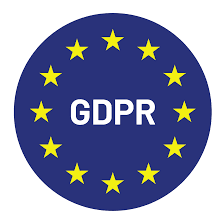Jul 31, 2025
Ramadan in Indonesia is more than a spiritual moment - it’s one of the most commercially significant retail periods of the year. According to Nielsen, FMCG sales during Ramadan can rise by up to 30%, with grocery and convenience channels seeing particularly sharp spikes.
For mid-sized retailers, this creates a high-stakes, high-opportunity window. But time is short.
The good news? You don’t need a digital overhaul. With focused action on your existing data and systems, you can unlock measurable results before Ramadan begins.
Here are five proven, data-backed strategies mid-sized Indonesian retailers can activate immediately:
1. Identify and Prioritize Your Ramadan MVPs (Most Valuable Products)
Every Ramadan has its standout products - syrup (sirup), ketupat casings, and bumbu instan. But hidden gems often drive additional revenue: premium fruit juices during suhoor, traditional desserts during iftar, and ready-to-eat snacks during late-night hours.
Start with a 3-year review of POS data: focus on products with seasonal spikes, high ATV, and strong repeat purchase behavior. Tools like Loyalytics SKU Performance Analyzer can automate this analysis across timeframes and store formats.
Look at what’s frequently bought together - for example, bundling sirup with snack packs or rice with oil - and use this to build product clusters.
Once you’ve shortlisted your MVPs, communicate this to marketing, store ops, and supply chain teams. Prioritize placement, feature them in weekly leaflets or WhatsApp campaigns, and give them stocking priority.
2. Segment and Engage Repeat Shoppers Using RFM Analysis
Customer behavior during Ramadan isn’t uniform. Some increase basket size, others become deal-driven, and many shop only during this season.
To act on this, apply RFM analysis:
Recency: How recently did they shop?
Frequency: How often do they shop?
Monetary: How much do they spend?
CRM tools - or retail analytics platforms like Loyalytics - can help you auto-segment customers into:
Champions: high-value, frequent
At-risk: previously regular, but absent in the last 60–90 days
Seasonals: active mostly during Ramadan
Tailor campaigns accordingly:
Champions: early access to Ramadan bundles or tiered rewards for multiple visits
At-risk: personalized messages referencing past purchases
Seasonals: “We missed you last Ramadan” nudges with curated offers
Deploy through WhatsApp, SMS, or app notifications - especially in suburban and Tier-2 areas where email response is low. And ensure cross-team alignment on who gets what message and when.
3. Test Promotions Like a Retail Lab
Ramadan promotions are often based on past practice - not performance. Instead, treat your stores like controlled testing environments.
Choose 3–5 key SKUs or bundles and test different mechanics:
Store A: flat discount
Store B: buy-2-get-1
Store C: no promo (control group)
Platforms like Loyalytics A/B Testing Suite help retailers design, monitor, and compare store-level tests easily. Over a 2-week window, track:
Unit uplift
Gross margin changes
Revenue per store
Repeat purchase rates
More importantly, analyze results, share insights across teams, and adjust your promo plan for Eid week accordingly.
Also communicate these offers clearly to store staff and customers - clarity boosts conversion.
4. Adjust Store Operations Based on Real-Time Behavior
Ramadan significantly alters shopping behavior. For example, in Jakarta and Surabaya, in-store footfall often peaks between 8 PM and 10 PM, post-tarawih. Retailers sticking to 9–5 models risk losing high-intent traffic.
Use historical data to answer:
When do transactions peak - weekdays vs weekends?
Which stores see more post-iftar footfall?
Are online orders coming in later at night?
Then adapt:
Extend evening hours in urban outlets
Shift staff rosters and delivery windows
For e-commerce, improve last-mile capacity post-7 PM
Even small shifts - like delaying your last truck dispatch by an hour - can make a big difference in conversion.
5. Plan Early for the Eid Surge
Retailers often focus on the early weeks of Ramadan. But the final 7 days before Eid frequently account for 25–35% of Ramadan revenues, especially in high-margin categories.
Use past years’ sales data to forecast demand for:
Giftables: premium dates, chocolates, biscuits
DIY hampers: curated or customizable sets
Digital vouchers: increasingly popular with younger families
Coordinate early with suppliers, especially for imports or slow-moving SKUs. Use demand prediction tools or partner with platforms like Loyalytics for automated forecasting.
Create a contingency plan for last-minute surges or supplier disruptions. Build buffer stock, explore alternate vendors, and use dynamic in-store signage to substitute OOS items.
Final Word: Move Fast, Stay Nimble
You don’t need AI dashboards to succeed during Ramadan - though they help. What you really need is clarity, focus, and fast feedback loops.
Use the data you already have - POS, CRM, and store performance - to test quickly and act decisively.
Ramadan is not just a spike. It’s a pattern. The retailers who thrive are the ones who listen, respond, and stay agile throughout the season.
Need help turning these strategies into execution?
Talk to our team at Loyalytics - we’ve helped Indonesian retailers navigate Ramadan for over a decade. Whether it’s RFM segmentation, MVP planning, or promo testing, we’ll help you make the most of the moment.
👉 Visit our Talk to Us page to connect.











